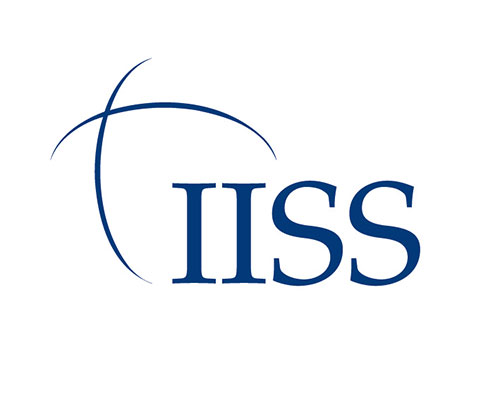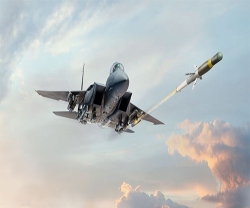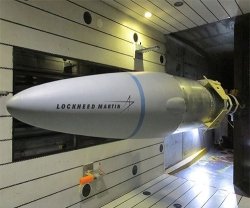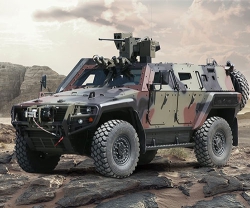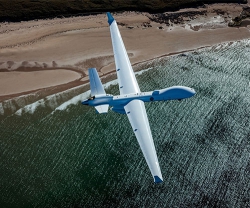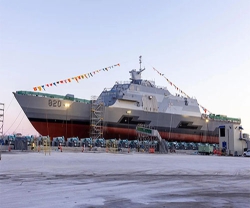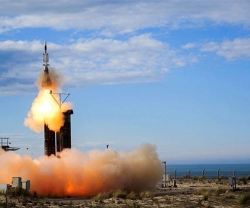Global defense spending continues to rise and reached a new highpoint in 2020 despite the coronavirus pandemic and the subsequent contraction in global economic output, according to new figures released by The International Institute for Strategic Studies (IISS).
Drawing on figures from the Military Balance Plus database, data featured in The Military Balance 2021 shows that global defense spending increased in 2020 to reach US$1.83 trillion, growing by 3.9% in real terms over 2019 figures.
The US still spent most on defense in 2020, accounting for 40.3% of total global defense spending, but the upward trend continues in Asia, even if growth rates decelerated there. Spending growth slowed to 4.3% from 4.6% in 2019 as several countries adjusted their defense budgets to redirect funds to crisis relief or economic stimulus measures. However, others simply reduced or deferred planned spending growth rather than implementing cuts.
Asia spent 17.8% of total global defense spending in 2010, and by 2020 this had risen to 25%. The increase in the region’s spending is driven by China. While real growth in China’s defense budget slowed to 5.2% in 2020, down from 5.9% in 2019, the nominal increase in China’s 2020 defense budget, amounting to US$12 billion, was still greater than the combined defense budget increases in all other Asian states. Overall, increases in the US and Chinese defense budgets accounted for about two-thirds of the gross real-terms increase in global defense spending in 2020.
Global defense expenditure increased as a proportion of GDP,rising from 1.85% in 2019 to 2.08% in 2020, as military budgetswere maintained despite economic contractions resulting fromthe coronavirus pandemic. Average defense spending amongEuropean NATO members has increased as a proportion ofGDP, from 1.25% of GDP in 2014 to 1.52% in 2019 and 1.64% in2020. This rise reflects changing threat perceptions after Russiaannexed Crimea in 2014, but despite the 7.0% average economiccontraction expected in 2020, it remains under NATO’srecommendation that its members spend 2% of GDP on defense.
Middle East Spending Stalls
Defense spending in the Middle East and North Africa contractedfor the third consecutive year in 2020, in line with subdued oilprices, falling to US$150 billion (excluding security expenditure).
Also, the region’s share of global defense spending fell to 8.9% froma peak of 10.5% in 2017. This comes despite the region allocatingthe world’s highest proportion of economic output to defense,5.2% of GDP, compared to the global 2020 average of 2.08%.
Russian Spending Stagnates
Russia, also economically dependent on oil prices, managed asizeable 3.8% real increase in 2020 core ‘national defense’ budgetbut only a negligible nominal 1.4% for 2021, which translates to a3.6% cut in real terms. Total Russian military expenditure (includingpensions, military housing health and social support) is set to fallfrom over 4.1% of GDP in 2020 to under 3.8% of GDP by 2023.
Financial Pressure in Europe, but Spending Grows
The commitment by major European defense markets - France,Germany, Italy and the UK - to continue increasing defensebudgets in 2021 signals intent to avoid the cuts implementedafter the 2007-08 financial crisis. The UK’s November 2020announcement of £16.5bn (US$21.1bn) in additional defensefunding over the 2021-2025 may reduce the affordability gapin the UK’s ten-year Equipment Plan. France and Germany,meanwhile, enacted sizeable investment programs in 2020to support domestic defense industries and continued withexisting military financial plans for 2021.
Quick Adjustments in Asia but Stronger Growth Expected
Growth in Asia-Pacific defense expenditure slowed to 4.3% from4.6% in 2019 as several countries in Asia (including Indonesia,South Korea and Thailand) made downward adjustments to 2020defense budgets. However, many countries simply downgradedplanned defense spending growth rather than implementing cuts.

